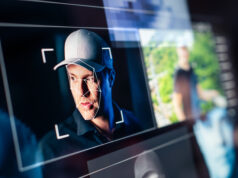
In the age of ubiquitous technology, dashcams and smartphones have become silent witnesses to countless legal disputes. Whether it’s a rear-end collision on a busy highway or a pedestrian accident in a crowded city intersection, video footage often plays a critical role in establishing fault. But while the public perception is that “video never lies,” the legal reality is far more complex.
Admissibility isn’t automatic. Attorneys must navigate a maze of evidentiary rules, authentication standards, and chain-of-custody questions before footage can be shown to a judge or jury. This blog explores the legal gray areas surrounding dashcam and smartphone video evidence—particularly in civil cases like car accidents—and outlines what legal professionals and everyday citizens alike need to know.
Why Dashcams and Smartphones Are Game-Changers
The surge in dashcam usage over the last decade has revolutionized the way accidents are reported, investigated, and litigated. According to a report by Market Research Future, the dashcam market is projected to grow significantly due to rising concerns over road safety and liability claims. Meanwhile, the average smartphone user carries a high-resolution video camera everywhere, making on-the-spot documentation of accidents more feasible than ever.
These devices offer what seems like indisputable evidence. But as every trial lawyer knows, courts don’t just ask whether footage exists—they ask if it’s legally admissible.
The Rules of Admissibility
1. Relevance
Under Federal Rule of Evidence 401, evidence must be relevant to be admissible. In car accident cases, video footage is typically relevant if it shows the sequence of events leading to the crash or the aftermath (e.g., injuries or road conditions).
2. Authentication
Perhaps the most contentious hurdle is authentication. Under Rule 901, the party offering the video must produce sufficient evidence to support that it is what the proponent claims it to be.
This usually requires:
- Testimony from the person who recorded the footage
- Metadata or timestamps
- Proof that the footage hasn’t been tampered with
Failing to meet this standard could lead to exclusion, even if the footage appears legitimate.
Legal Pitfalls and Chain-of-Custody Concerns
Even if footage seems authentic, it can be ruled inadmissible if there’s a break in the chain of custody—meaning the recording can’t be reliably tracked from creation to courtroom. In some cases, opposing counsel may argue the footage has been edited or selectively clipped.
Data integrity tools like hash values and digital signatures are becoming more important in confirming that no post-recording alterations were made. Legal teams working with smartphone or dashcam footage should consider consulting with digital forensics experts to avoid challenges.
Surveillance or Invasion?
Another gray area emerges when one party uses dashcam or smartphone footage without the consent of the recorded individual. While public roadways are generally fair game, private property or situations involving audio may invoke wiretap laws or privacy claims, depending on the state.
For example:
- California and Illinois have strict two-party consent laws for audio recordings.
- Recording someone inside their vehicle or home without permission could violate privacy statutes even if the footage later shows incriminating behavior.
How Judges Evaluate Dashcam and Smartphone Footage
Ultimately, judges have wide discretion in admitting video evidence. They may exclude it for:
- Prejudice outweighing probative value (Rule 403)
- Lack of clarity or audio distortion
- Questions around chain of custody
- Violation of privacy or consent laws
Judges also weigh whether footage has been slowed, zoomed, filtered, or captioned—any of which could make it appear misleading.
Real-World Implications in Car Accident Litigation
For personal injury lawyers, dashcam and smartphone footage can be a double-edged sword. On one hand, clear video of a negligent driver running a red light can make settlement faster and easier. On the other, a poorly authenticated clip—or one that captures partial context—can mislead juries or be weaponized by insurance defense attorneys.
In some cases, courts have even excluded dashcam footage due to lack of proper foundation, resulting in setbacks for plaintiffs relying heavily on visual evidence.
According to a report by the National Association of Insurance Commissioners, insurers increasingly consider dashcam footage when determining fault—but their interpretations don’t always align with legal admissibility standards.
Final Thoughts: Protecting Your Rights with Qualified Legal Help
Navigating these evidentiary issues is not something accident victims should tackle alone. A single dashcam file or smartphone video can tip the scales of justice—but only if it’s handled correctly from the start.
If you’ve been involved in a car accident and have video footage you think could support your claim, or if you’re unsure how to secure and submit it properly, contact our car accident lawyers today. An experienced legal professional can help ensure your evidence meets courtroom standards and maximizes your chance of a successful outcome.




